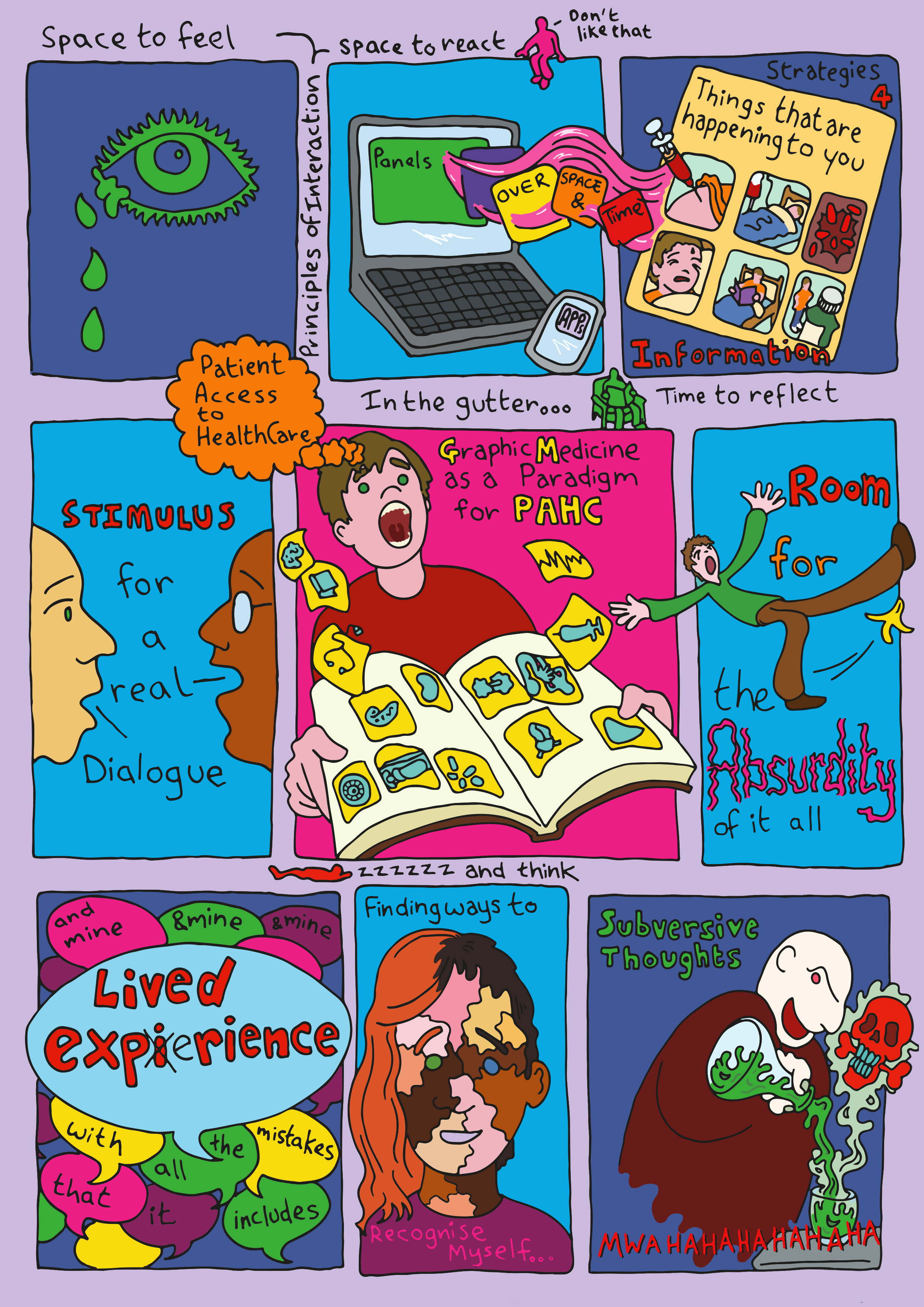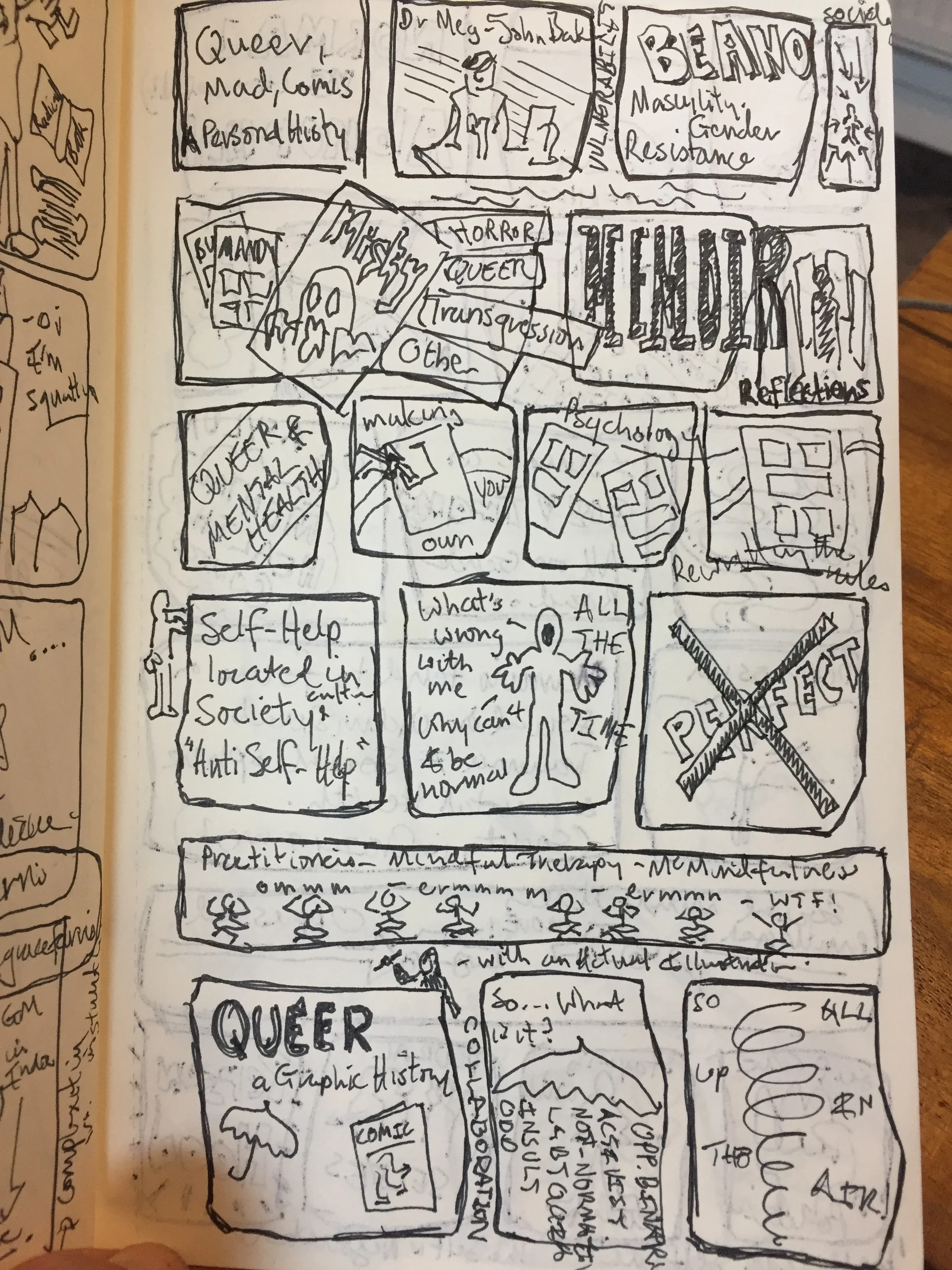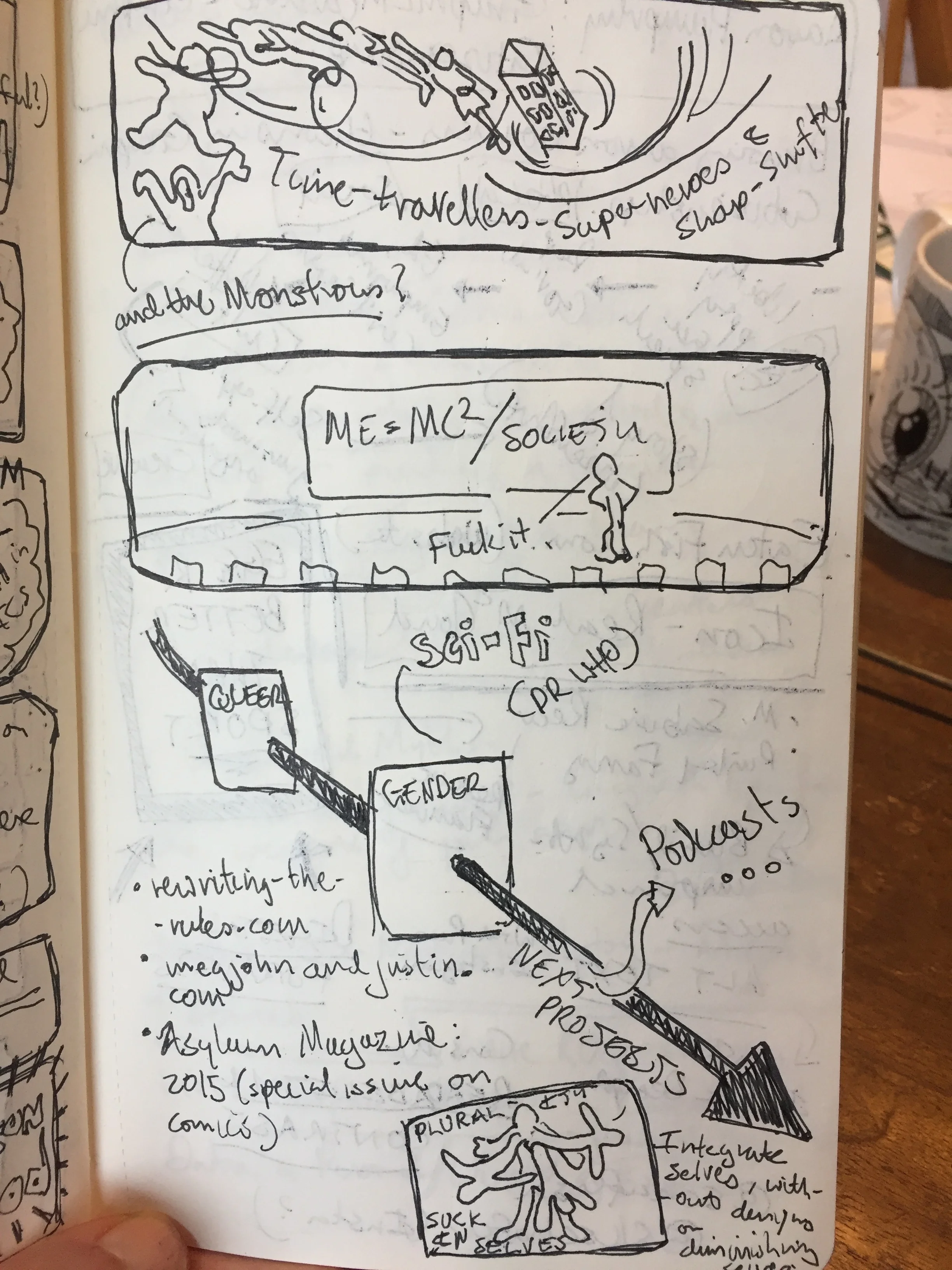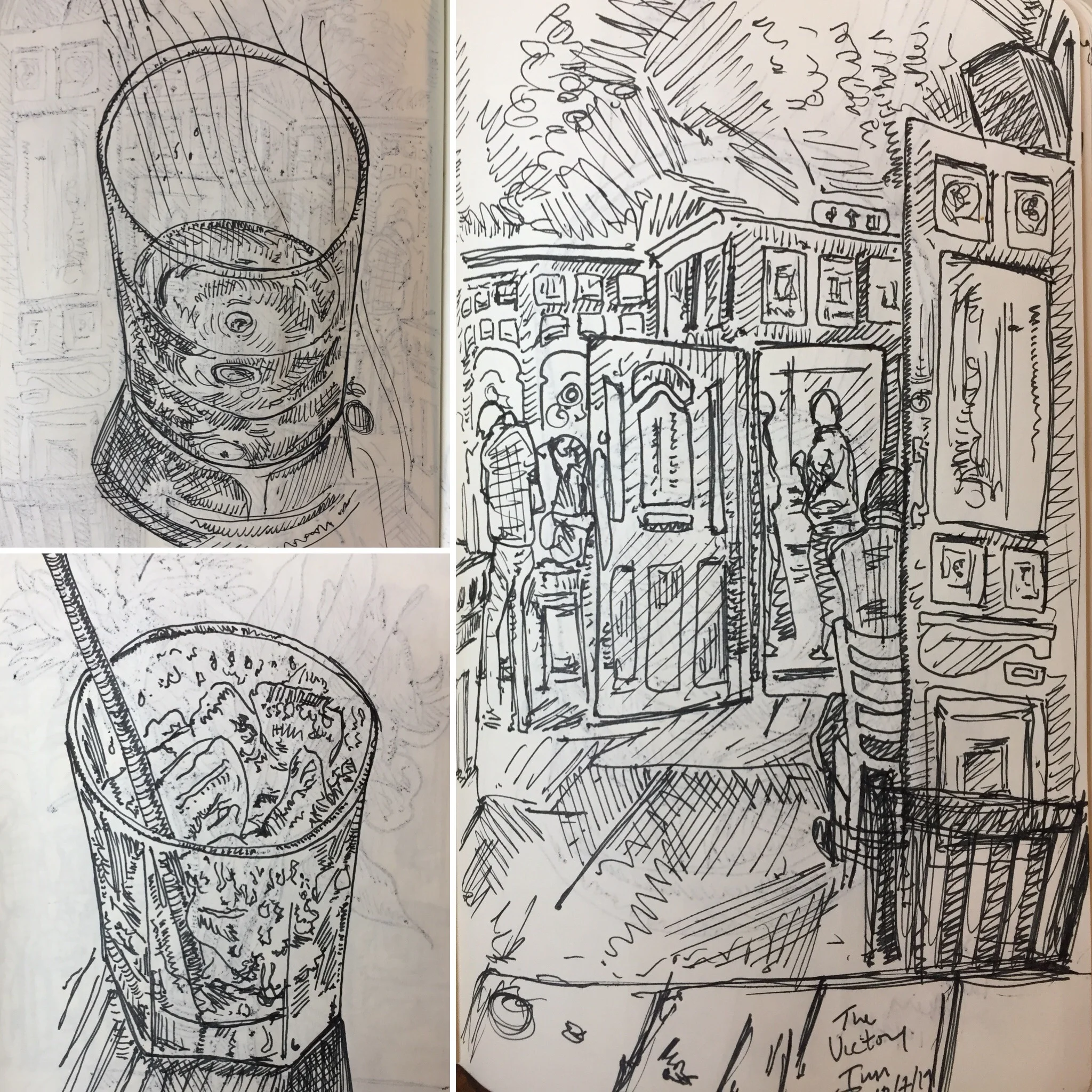The sun had set, the moon luminescent in the sky – light flickering on the lapping waves. Heat and Summer stretched along the Brighton seafront – as back towards the centre Saturday night sprawled onto the shore.
Watching the dancing light, I felt a curious mixture of elation and exhaustion. The last three days of the Graphic Medicine 2019 conference had been an adventure: with so many people to see and speak to; new perspectives to consider and new work to appreciate – and wow to; as well as the small matter of my own presentation to prepare and deliver. After all that those dancing lights seemed to slip between inspiration and delirium.
fig.2 Graphic Medicine as a paradigm for PAHC
fig.1a: Meg-John Barker: Queer: A Graphic History (comics notes)
The theme of this year’s conference was Que[e]rying Graphic Medicineand kicked off with a keynote by Dr Meg-John Barker that looked at “queering” as a deconstruction of the simplicity of binary relationships in psychology and explored the notion of the many selves we are and act throughout our lives. Their speech spoke to my belief in the importance of communicating and engaging with complexity in the conversation between Healthcare Institutions, Professionals and People Accessing Healthcare; a belief that got me into graphic medicine in the first place [fig.2 are my comics notes of her keynote[1]].
fig.1b: Meg-John Barker: Queer: A Graphic History (comics notes)
The breadth of the conferences took me from panel to workshop to conversation then further conversation over drinks. My snapshot covered comics that started conversations, that articulated multitudes of selves, that engaged with the lived experience of healthcare workers, carers and people living with illness[2]; presentations questioned our assumptions of form, value and benefit and sought to find ways to make plurality accessible – immediately and digitally[3]; workshops explored ways to allow access to aesthetic discovery and consider our models of healthcare[4], and all through this I saw comics that were beautiful, poignant, absurd – but mostly honest[5]. Presenters navigated the complexity of telling their own stories and how to express the stories of others[6], artists questioned and illuminated their own processes – and considered how the visual language of others could be re-purposed to allow themselves to say something they might otherwise keep hidden[7]. The final keynote was MK Czerwiec’s account of Coming Out as a Cartoonist, and the heartbreak and joy that fuels Taking Turns her memoir of the experience as a Nurse in Unit 371, an Aids unit at Illinois Masonic Medical Center in Chicago, that ran from 1984 to 2000. All of which was summed up by Matthew Noe – taking a break from live tweeting everything!
fig.1c: Meg-John Barker: Queer: A Graphic History (comics notes)
I couldn’t see all the panels, nor can I cover all I saw – so my apologies now to anyone I’ve missed out. For myself, the conference allowed me to speak on Diabetes: Year One – my impulses towards poetry and comics, and the articulation of comics as a research methodology. To discuss the process of discovery in the movement from being a person, then a patient, and then a person living with diabetes, and then, maybe in the future, a person who has diabetes. My talk led me to draw (a good sign I feel), to attempt to describe the way the comics has brought me to see comics as a paradigm for Person Access to HealthCare (PAHC – and yes the illustration was added last minute – hence my mistake of writing “patient” instead of ‘person’ in the orange bubble, go-on look, told you) – as a model for UX design, if you will [fig.1]. The idea is to realise that it is the person in the spaces between that gets to construct the meanings between the panels of information and experience, so instead of leaving the gutter as an after-thought, maybe design with the gutter space as the focal point?
fig 3. Brighton: Pubs n Drinks
As well as all this, I got to talk out ideas for another comic project (no pics – the thumbnails are waaay to rough and over-written after getting too excited), drink way too much and explore some of Brighton’s pubs [fig.3]… and sights *coughs. Which might explain why the blog is late this week.
To conclude it was a phenomenal conference and a huge thanks needs to go to the organising committee: Bobbie Farsides, Ian Williams and Muna Al-Jawad, and I hope to make it again next year – in Toronto.
[1]Meg-John Barker: Queer: A Graphic History
[2]Wilkins, Caron, Grennan, Priego, Rana & Roper: On the Aesthetic Education of Caregivers: The Specificities of Form and Genre in Comics about Dementia Care; McNicol & Leamy: “He’s got a tongue, you know!”: Creating a comic with people with Dementia
[3]Christina Maria Koch: Talking about Illness Experience in Graphic Medicine – Theory, Method, Politics; Alice Jaggers: Definitions without Borders: How to Define Graphic Medicine While Being Inclusive; Sam Schäfer: There is More to Comics and Blindness than Daredevil
[4]Councillor, Fox & Fryzelka: Drawing new paradigms of health and care
[5]Loads of these – but especially Zara Slattery: Coma Comic (work in progress – watch out for this!)
[6]Adam Bessie: It’s All In Our Head: Graphic Memoir in Collaboration; Viivi Rintanen: Comics about Madness – how to reduce the stigma of madness with a comics blog
[7]John Miers: Processing my own trauma through the voices of others.





